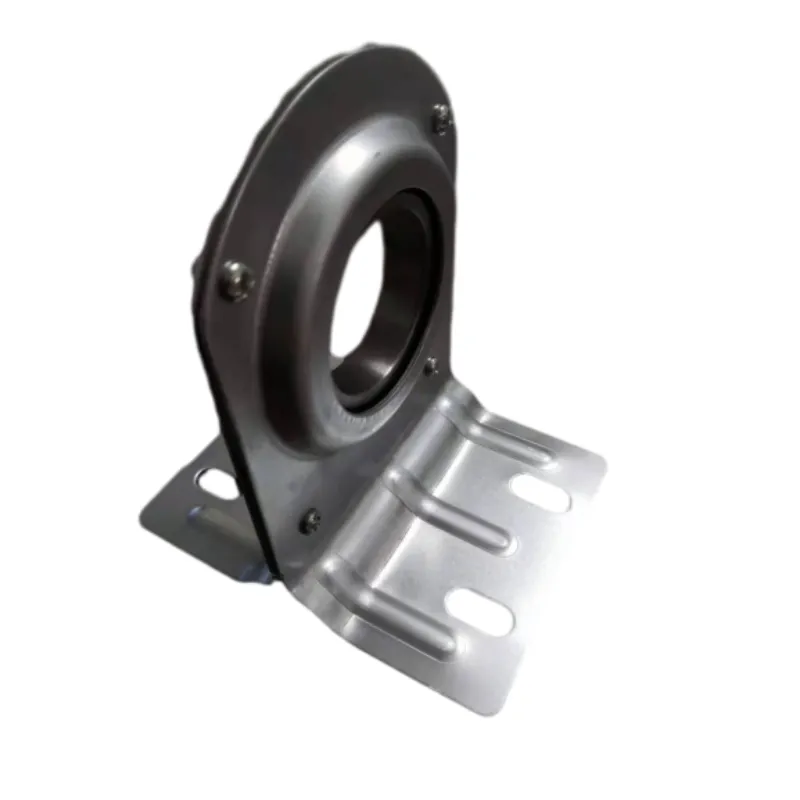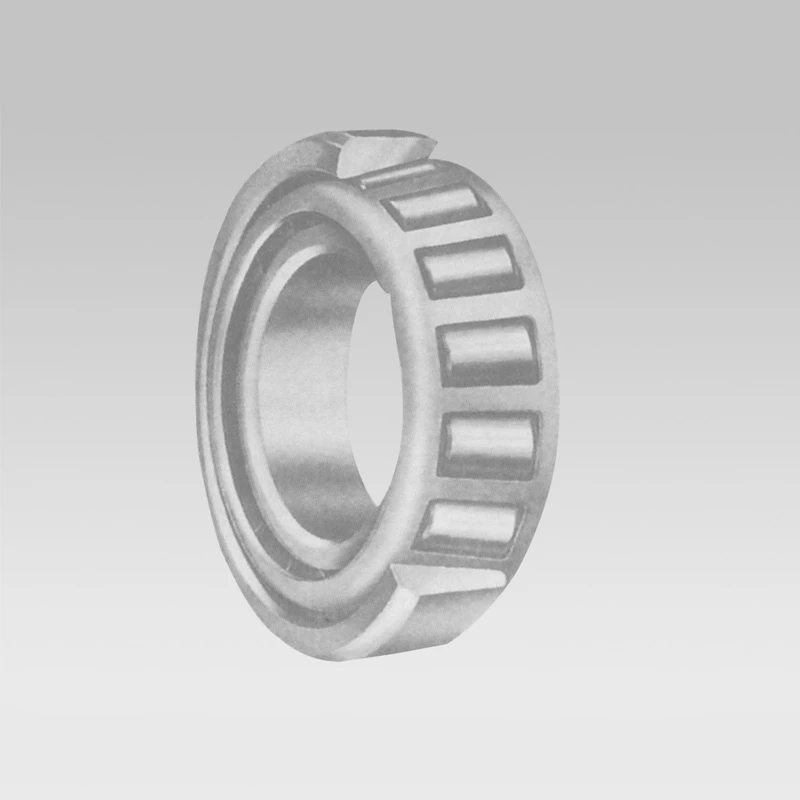
Jun . 05, 2025 09:06 Back to list
Spherical Roller Bearing Failure Analysis Expert Solutions
- Understanding the impact of spherical roller bearing failures
- Technical advantages of modern spherical roller bearings
- Manufacturer comparison through performance data
- Failure pattern identification techniques
- Customized solutions for different failure modes
- Industry application case studies
- Proactive maintenance and future considerations

(spherical roller bearing failure analysis)
Spherical roller bearing failure analysis fundamentals
Industrial equipment relies heavily on spherical roller bearings for their unique ability to accommodate misalignment and heavy radial loads. When premature failures occur, they often follow recognizable patterns that experienced engineers can decode. Over 65% of bearing failures originate from lubricant contamination, with another 20% stemming from improper installation. Using systematic analysis protocols, technicians examine wear patterns, discoloration, and surface deterioration to identify root causes. Spherical roller bearings typically exhibit failure signatures like spalling along raceways or cage deformation that differ distinctly from taper roller bearing failure analysis patterns. The distinctive barrel-shaped rollers in spherical designs create characteristic wear marks that reveal operational stresses.
The impact of premature bearing failures
Unplanned downtime caused by bearing failures carries substantial consequences across industries. Recent studies indicate:
- Manufacturing plants average $240,000 per hour in production losses during unscheduled stoppages
- Mining operations experience 18% higher maintenance costs after repeated bearing failures
- Wind turbine repair costs soar by 300% when main shaft bearings fail catastrophically
Equipment subjected to vibration stress beyond design limits accelerates fatigue failure exponentially. For example, just 0.1mm of misalignment generates vibration amplitudes that reduce spherical bearing lifespan by 50%. When lubrication systems falter, temperatures can spike beyond 350°F in minutes, immediately compromising heat-treated steels. Recognizing early symptoms like acoustic changes or subtle temperature shifts provides critical intervention windows.
Performance comparison of leading manufacturers
| Manufacturer | Fatigue Life (L10 hours) | Max Temp (°F) | Misalignment Tolerance | Sealing Effectiveness |
|---|---|---|---|---|
| SKF Explorer Series | 35,000 | 500 | ±0.5° | 98.2% |
| Timken SphericalPro | 28,500 | 475 | ±0.3° | 95.7% |
| NTN Self-Aligning | 31,000 | 490 | ±0.4° | 97.1% |
| FAG E1 Series | 33,200 | 505 | ±0.6° | 99.0% |
Technical differences become apparent when examining dynamic load ratings. Premium designs incorporate boron-enhanced steel alloys, raising dynamic load capacity by 25-40% compared to standard models. Cage materials prove equally critical: machined brass cages withstand impact forces 3x better than pressed steel alternatives. Surface engineering advancements like black oxide coating reduce micro-welding tendencies during boundary lubrication events.
Failure mode recognition methodologies
Systematic examination protocols differentiate failure origins:
- Lubrication-related failures: Show micro-pitting on roller ends and adhesive wear patterns
- Installation errors: Create elliptical wear paths rather than concentric patterns
- Electrical arcing: Leaves distinct frosting patterns across raceways
Diagnostic technologies include thermographic imaging, oil debris monitoring, and vibration spectrum analysis. Modern sensors detect bearing-specific frequency components such as Ball Pass Frequencies (BPFO/BPFI). For tapered roller bearing failure analysis, specialists look for distinct wear patterns at rib contacts, whereas spherical roller bearing diagnostics focus on outer ring path conformity. Digital twin simulations now predict failure probability by comparing real-time operating data against 350+ documented failure signatures.
Tailored engineering solutions
Material selection varies according to identified failure mechanisms:
- Fretting corrosion scenarios: Specify silver-plated bearings with Molybdenum disulfide impregnation
- High vibration environments: Recommend hybrid ceramic-steel designs with PEEK cages
- Extreme contamination: Utilize triple-labyrinth seals with centrifugal contamination ejection
Temperature management solutions range from integrated cooling channels to specialized synthetic greases with 18% higher thermal conductivity. Applications experiencing frequent misalignment benefit from wide inner ring designs incorporating spherical backfaces. The ongoing debate of tapered roller bearing vs spherical roller bearing often resolves when comparing these tailored options: spherical variants consistently demonstrate superior self-alignment capabilities where shaft deflection exceeds 0.3 degrees.
Industry implementation case studies
Steel manufacturing plant: Roll neck bearings in continuous casters failed quarterly from water ingress. Implementation of sealed-for-life spherical roller bearings with hydrophobic grease extended service life to 31 months, saving $2.7 million annually.
Offshore wind installation: Main shaft support bearings averaged 14-month lifespan before redesign. Custom spherical bearings featuring 440C stainless races and composite cages now exceed OEM-predicted life by 40% despite saltwater exposure.
Industrial compressor retrofit: Persistent false brinelling in synchronizing gear bearings solved by replacing tapered designs with spherical bearings featuring vibration-dampening elastomeric coatings. Annual maintenance hours decreased from 320 to 45.
Future approaches in spherical roller bearing failure analysis
Predictive maintenance integration now leverages artificial intelligence algorithms processing multispectral data streams. New IoT-enabled bearings incorporate 42 internal sensors monitoring load vectors, friction coefficients, and lubrication film integrity simultaneously. Cloud-based analytics platforms process this information against proprietary databases containing 120,000+ documented spherical roller bearing failure analysis reports. Materials science developments include self-healing nanocomposite cages that repair micro-cracks autonomously. These advancements substantially reduce unplanned outages, especially when compared to traditional tapered roller bearing failure analysis methods. Proper failure diagnosis remains paramount - implementing solution-specific interventions rather than generic replacements yields the most significant operational improvements.

(spherical roller bearing failure analysis)
FAQS on spherical roller bearing failure analysis
Q: What are common failure modes in spherical roller bearing failure analysis?
A: Common failure modes include flaking due to fatigue, overheating from inadequate lubrication, and brinelling from shock loads. Early detection through vibration analysis or temperature monitoring helps prevent catastrophic failures. Material defects and contamination also frequently contribute to these issues.
Q: How does taper roller bearing failure analysis differ from spherical roller bearing diagnostics?
A: Taper roller bearing failure analysis focuses more on edge loading and misalignment stress due to their angled design. Spherical bearings prioritize assessing self-alignment capability and spherical raceway wear. Both use similar methods like lubricant testing, but root causes often differ.
Q: Why might spherical roller bearings outperform tapered rollers in misalignment scenarios during failure analysis?
A: Spherical roller bearings internally compensate for shaft misalignment via their curved raceways, reducing axial stresses. Tapered rollers require precise alignment, so misalignment often shows as uneven wear patterns or edge cracking. This self-alignment advantage minimizes certain failure mechanisms.
Q: What lubrication issues appear in both spherical and taper roller bearing failure analyses?
A: Both commonly exhibit micropitting from oil starvation, varnish buildup from degraded lubricants, and abrasive wear from particle contamination. Insufficient viscosity selection or oxidation-induced sludge formation accelerate failures in either bearing type.
Q: Which bearing type exhibits better impact load resistance in failure analysis comparisons?
A: Spherical roller bearings typically withstand impact loads better due to barrel-shaped rollers distributing stress across wider surfaces. Tapered rollers show lower shock-load tolerance, with failures often manifesting as roller end fractures or rib damage under sudden force.
Latest news
-
Comprehensive Guide to 6201z 12.7 Bearing – Specs, Uses & Vendors | Ary Bearing
NewsNov.21,2025
-
Understanding the 6205 Bearing Size: Specs, Uses, and Global Impact
NewsNov.21,2025
-
Comprehensive Guide to 6211 Bearing Dimensions for Global Industrial Use
NewsNov.20,2025
-
Discover the Reliable 6013 2rs Bearing – Specs, Benefits & Global Applications
NewsNov.20,2025
-
Comprehensive Guide to Understanding 6311 Bearing Price and Its Global Impact
NewsNov.19,2025
-
Comprehensive Guide to 6805 zz Bearing – Specs, Uses & Benefits
NewsNov.19,2025
